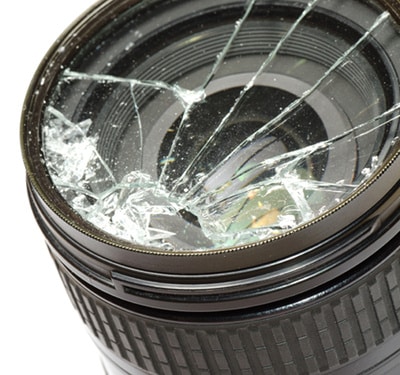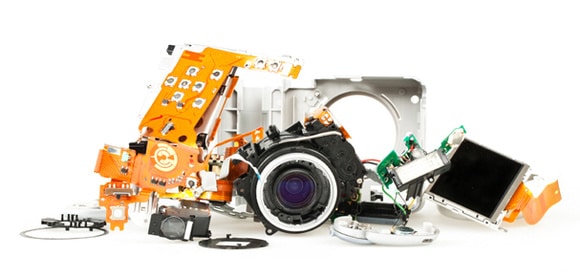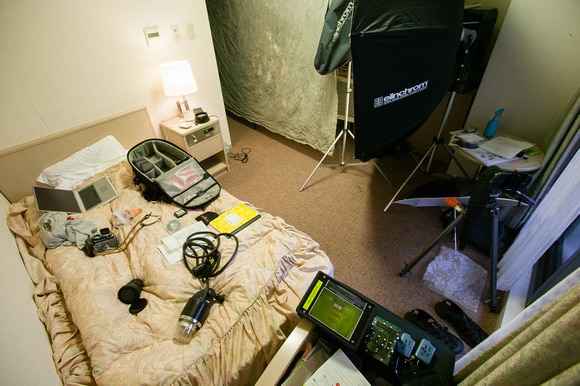Photographer’s Corner: Insuring success for your photography business
May 10th, 2013
How many of you have your camera equipment covered by renters or homeowners insurance? This may not be nearly enough coverage for what you need. A typical homeowner’s policy or renter’s policy will not cover professional use of your gear or have liability insurance for your business.
Photographers who belong to professional organizations like ASMP, PPA, APA, or The Socities/SWPP in the UK have access to underwriters who specialize in photographic insurance. There are also a number of insurance companies that specialize in insurance for photographers, including Imaging Insurance in the UK and Hiscox, which serves the United States, the UK, and a number of other countries. 
What type of coverage do you need?
This depends a lot on what type of photography you do. Do you have assistants or second shooters working for you? Do you have a studio, shoot on location, or use rental equipment often? These and many other factors will determine the type of coverage you need.
I’m going to break down a few different parts of an insurance package that can make up a photographer’s insurance policy. It isn’t meant to be an exhaustive review of every contingency you should cover but rather a general guide to what is available. The exact type of policy you can get will vary depending on the insurance company, type of photography, and state or country you are in.
Camera insurance
Naturally, this is the first type you should consider. Before you get started, put together a list of all your equipment, serial numbers, and value or replacement value as your insurance company or broker will most likely require this information. In general, it’s a good idea to keep this information up to date and remember to add or remove equipment from the list as you buy or sell gear.
An Excel® spreadsheet is an easy way to keep track of all this info. In addition to the fields I mentioned above, I also include an extra column for the country of origin for all my gear. This way I can use it for reference for a Carnet (merchandise passport) or equipment list when I travel abroad. Speaking of travel, it’s also important to check that your equipment is insured when you are out of studio, home, or country. One place to start looking for quotes is TCP & Co. Insurance. They offer a number of coverage options that can be custom tailored to your specific needs.

Liability insurance
This is essential to protect yourself and your business against third party claims for damage to property, injury, and medical costs. For example, if someone trips over a camera bag at a wedding or a power cord for a light in your studio and injures themselves, or you break something valuable moving furniture or artwork around, you want to be covered. One to two million dollars of liability is a normal starting amount for this coverage. Keep in mind that some clients require that you have this coverage. Also, if you are a wedding or event photographer, some locations may require liability insurance as well.
You also need this liability insurance to get a location permit if you are shooting somewhere that requires one. Usually the location or film office will require a Certificate of Insurance (COI) naming them as additionally insured to show that you are covered for liability. Often there is a small charge by your broker or insurance company to issue each certificate that you need. Both TCP & Co. Insurance (mentioned above), and Taylor & Taylor Associates offer this type of coverage.
Computer equipment
These days it’s possible to have a lot of valuable computer equipment that can be a large percentage of the equipment you need for your business. Fortunately, many insurance policies cover your computer equipment as well. Laptops will often have an additional premium, as these are the easiest to damage or have stolen.
My policy covers me for computers and electronics that stay on the premises, and I have a separate list for items like laptops, iPads, etc. that covers me for use on location. The “on premises” and “off premises” lists have different maximum values of what can be covered. The “off premises” coverage is a lot lower, but ample enough for a couple of laptops and iPads. Again, TCP & Co. Insurance is a good option for this type of insurance.
Errors & omissions liability ( AKA professional liability insurance )
Errors and omissions (E&O) is the insurance that covers you if a client holds you responsible for a shoot that did not come out as expected. In other words, this covers you for errors (or omissions) that you have made or that the client perceives you have made.
Here’s a description of what this type of insurance is for from Tom C. Pickard & Co. Insurance. Their E&O coverage is available for an additional $250 a year:
“Protects you against losses from copyright infringement, trademark, trade name, title, slogan, false advertising, idea misappropriation, invasion of privacy or publicity right, or defamation arising out of any photographic or digital visual imagery services.”
Other extras
Other insurance policy extras cover auto insurance and building insurance, which may be useful for some photographers. You can find these types of coverage from Taylor & Taylor Associates.
Workers’ compensation
If you use assistants or second shooters you might need workers’ compensation even if you think these are independent contractors. The IRS has some rules to determine if the person you hire is a contractor or employee. Keep in mind that workers’ compensation requirements may vary depending upon what state you live in.
Rental equipment
Are you covered for renting equipment? Do you just put the full cost of the rented equipment as a hold on your credit card? If you don’t have insurance for this and you rent a lot of equipment, paying the extra insurance each time can add up.
If you do have rented camera equipment insurance, does it cover the replacement cost of what you are renting? While you think that you are going to be careful with gear that isn’t your own, unexpected accidents can happen, and they have happened to me.
A few years ago I went to Tokyo to photograph some sumo wrestlers. I also planned to shoot a few other portraits while I was there. Renting equipment in Japan was quite difficult at the time. You couldn’t just rent a lens or lights without a guarantor or a letter of introduction. Plus, they didn’t take credit cards and you needed an active account with the rental agency.
The easiest thing for me to do was to rent the lights I needed in the US and take them with me to Japan. No problem, apart from the cost for the extra bag on the plane. Fast forward a few days and I’m in Yoyogi Park near Harajuku shooting some Japanese rockabillies. It was a nice day. A little cloudy and humid but good enough to shoot outdoors with a background and a battery powered strobe. Unfortunately, I didn’t realize that it was the end of typhoon season, and a storm came out of nowhere. Within a couple of minutes I was soaked to the skin, and my lights, camera, and laptop were all wet.
My afternoon shoot was literally a washout. I got back to my hotel and dried off all the equipment. My camera and laptop seemed ok, but I thought it would be smart to let the strobes dry off for another day or so since I didn’t need them quite yet.
When I did switch the pack on and pop a few test flashes I was not expecting a large bang. Total disaster. After a call to Sweden and a trip to Profoto’s Japanese subsidiary’s repair facility, I found out I had destroyed the rental pack and it was beyond repair. My immediate concern was how to get more lights to shoot the sumo wrestlers later in the week – which is a whole other story.

The point is that I had coverage for rented equipment. I could concentrate on the shoot at hand, and worry about my deductible when I got home. Since I had insurance coverage for rental equipment I didn’t have to stress out about how I was going to come up with full replacement value ($5,000 – $6,000) to replace the Profoto 7B I had just destroyed.
An ounce of prevention equals a pound of protection
So, as you can see, professional insurance for your photography business is something that you should seriously consider if you don’t have it already. Although we are all really careful with our gear, accidents do happen. Over the years I’ve spent as an assistant and photographer I’ve certainly seen and heard about broken cameras and lenses, damaged props, and wrecked rental cars.
To be sure you have the proper amount of coverage, review your current policy and make an updated list of all your gear. If you don’t currently have insurance visit one of the companies listed above to get an estimate of the cost for the coverage you need. Thankfully, professional insurance is a business expense so it should be tax deductible. Also, consider adding a small amount to your fees or products to offset the cost of having the insurance you really need. By having the proper insurance you can prevent a ruined shoot or piece of equipment from ruining you financially.

Jon Hope is an accomplished aerial and portrait photographer with an extensive portfolio of impressive images. Specializing in shooting from above, Jon’s colorful and creative photos show what a unique perspective he brings to his work. From high end portraits to aerial cityscapes, his images always deliver. Check out John’s online portfolio here: https://store.jonhope.com/


